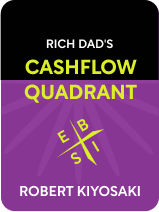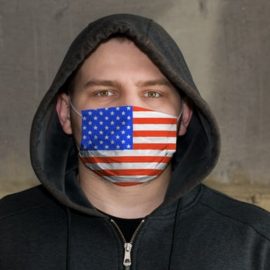

This article is an excerpt from the Shortform book guide to "Rich Dad's Cashflow Quadrant" by Robert T. Kiyosaki. Shortform has the world's best summaries and analyses of books you should be reading.
Like this article? Sign up for a free trial here .
What types of income are there? Which income categories provide more job security? Which ones require more risk yet yield higher rewards?
According to financial educator Robert Kiyosaki, there are four different types of income which he calls “cashflow quadrants”: 1) employees, 2) the self-employed and small business owners, 3) big business owners, and 4) investors. People who choose to be in the first two categories value security above freedom, but generating income by being an employee or a small business owner are dead ends on the road to wealth.
Keep reading to learn about Kiyosaki’s four types of income or “cashflow quadrants.” We’ll also look at the traits that generally attract people to these income types.
Different Types of Income Yield Different Results
In Rich Dad’s Cashflow Quadrant, Robert Kiyosaki argues that to generate wealth, what kind of income you generate is more important than how much income you generate, or what kind of work you do. Kiyosaki uses the stories of his now-famous “Rich Dad” (his friend’s father) and “Poor Dad” (his own father) to illustrate how different types of income lead to different results.
He divides income into four categories, which he calls “cashflow quadrants”:
- Employees (E)
- The self-employed and small business owners (S)
- Big business owners (B)
- Investors (I)
1. Employees
In the E category, employees generate income by agreeing to do work in exchange for a salary. They have a boss and a paycheck. Kiyosaki says employees choose the E category because they value security and certainty. Traditional thinking says E category jobs are stable because they offer steady income and a clear job description. But there are downsides—Kiyosaki says the biggest disadvantage of an E category job is lack of control over your own work.
| Benefits of the E Category While Kiyosaki is quick to point out the downsides of being an employee, he’s short on positives. One benefit of an E category job is that it can be a great way to learn skills and get paid for it. Kiyosaki notes that he was an employee of the Xerox company for four years, where he learned to overcome his shyness as a salesman. Furthermore, many people appreciate, rather than feel held back by, the structure of an E category job. People with mortgages, student loans, or other long-term significant debt may appreciate predictable pay. Parents with school-age children may appreciate a predictable work schedule. Though Kiyosaki makes the disclaimer that all four “cashflow quadrants” make up an important part of the economy, he downplays the fact that many people seek out E category jobs because they enjoy work they can only do in the E category. Professors, researchers, chefs, and teachers, for example, all make a salary and often attract people interested in the particular kind of work offered in the E category. |
2. The Self-Employed and Small Business Owners
In the S category, small business owners and the self-employed are their business. They are their own boss, and they can also be the boss of other people, but without their labor, expertise, and management, their businesses can’t run. Their income is the profit from their business. Kiyosaki says people choose the S category because they value security and excellence in their work. According to Kiyosaki, people in the S category see it as the most stable way to generate income because they have the most control. The biggest disadvantage to trying to make a living in the S category is that most small businesses fail.
The biggest negative in the S category, according to Kiyosaki, is that most small businesses fail. S’s are at particular risk for burnout because they have to perform all the functions of their business, not just their core competency. A self-employed stylist has to be her own marketing team, do all her own invoices and expenses, and plan all her own travel. Like E’s, if an S business does succeed, Kiyosaki warns that success means long hours and a lot of hard work.
| Why Small Businesses Fail About 60% of small businesses will fail within their first ten years. Causes for small business failure other than the ones Kiyosaki lists include: Not enough capital. Small businesses need to plan to have enough of a financial cushion to keep them afloat until they become profitable. If they haven’t allocated enough, money can run out before the business is profitable, and it’s difficult for unprofitable businesses to get loans. Having a bad business plan, or not sticking to your good business plan. A bad business plan is a simple recipe for failure, and most businesses can’t absorb major spending or other changes. Poor or overwhelmed management. A small business owner has to manage both the business plan and a team of employees. They must have both business and leadership sense; one without the other is usually a sign of trouble. Not reading the market. In the heat of their desire to have a certain kind of small business, many S’s will enter an already saturated market. Additionally, your location and marketing, including internet presence, need to connect you to the right customers. Your business can’t thrive without customers. Caring more about excellence and independence than money: People in the S category often take great pride in the quality of their work, but quality doesn’t always translate to more sales or contracts. When S’s prioritize excellence at the expense of efficiency or marketing, their business is likely to fail. |
3. Big Business Owners
People in the B category control not only a business, but a business system. If they leave, the work still gets done. People in the B category own their business and generate income by its profit, though they no longer do the day-to-day labor of making it function. A B’s income is the profit from their business, and their business is considered an asset. B’s need to be skilled in delegation and leadership, as well as have a high degree of financial literacy.
Examples: Mark Zuckerberg (who founded and owns Facebook), Bill Gates (who founded and owns Microsoft), and the owner of your region’s pizza chain are all in the B category because they own business systems.
| The B Category vs. the S Category The distinction between S’s (small business owners) and B’s (big business owners) is subtle, in part because B’s often start off as S’s. For example, when a tutor sells her expertise and teaching abilities, she is her own product and her own business, which puts her in the S category. However, when the tutor becomes the owner of a tutoring company, she owns the system that finds and trains tutors, connects students to tutors, markets the service, and takes care of logistics. The tutoring company owner profits from the work and time of the E category tutors she hires. She’s now in the B category. Similarly, in the early days of Facebook and Microsoft, Zuckerberg and Gates, respectively, did the majority of the work themselves and received their income from that work—they were in the S category. As their products and services grew into systems, they earned more of their income from the work of others rather than their own day-to-day work. They entered the B category. |
4. Investors
In the I category, investors commit money (called capital) to something and expect to make a profit. Beyond the initial investment, they don’t have to work day to day like those in the other categories do. Instead, their livelihood comes in the form of assets that generate passive income. Examples of passive income include dividends from stocks, interest on bonds, and rental income. I’s need to be comfortable with risk, since managing risk is the foundation of investing.
| Should B’s and I’s Make Money for Everyone Else? Many people, usually on the political left, believe people in the B and I categories should make the government rich, so the government can help those who need it. Between 2008 and 2015, about 30 Fortune 500 companies paid nothing in U.S. taxes. While the Obama Administration lowered the corporate tax rate slightly during his presidency, the Trump Administration’s 2017 tax cut lowered the corporate tax rate from 35% to 21%, roughly doubling the number of major companies that paid nothing or less in taxes. As of fall 2021, Republicans and Democrats in the U.S. Congress are debating the size of a post-Covid-19 spending bill that Democrats, who want to spend a larger sum than Republicans, say will be paid for primarily by increasing the tax burden on the rich. |
Final Words:
According to Kiyosaki, the first two income categories, employees (E) and the self-employed and small business owners (S), are usually dead-ends on the road to wealth. The other two categories, big business owners (B) and investors (I), are the most conducive to accumulating wealth because those are the categories in which you can develop income-generating assets.

———End of Preview———
Like what you just read? Read the rest of the world's best book summary and analysis of Robert T. Kiyosaki's "Rich Dad's Cashflow Quadrant" at Shortform .
Here's what you'll find in our full Rich Dad's Cashflow Quadrant summary :
- Why the traditional path of college to career doesn't work
- Which types of income will lead you to financial freedom
- An in-depth look at Robert Kiyosaki's four cashflow quadrants






